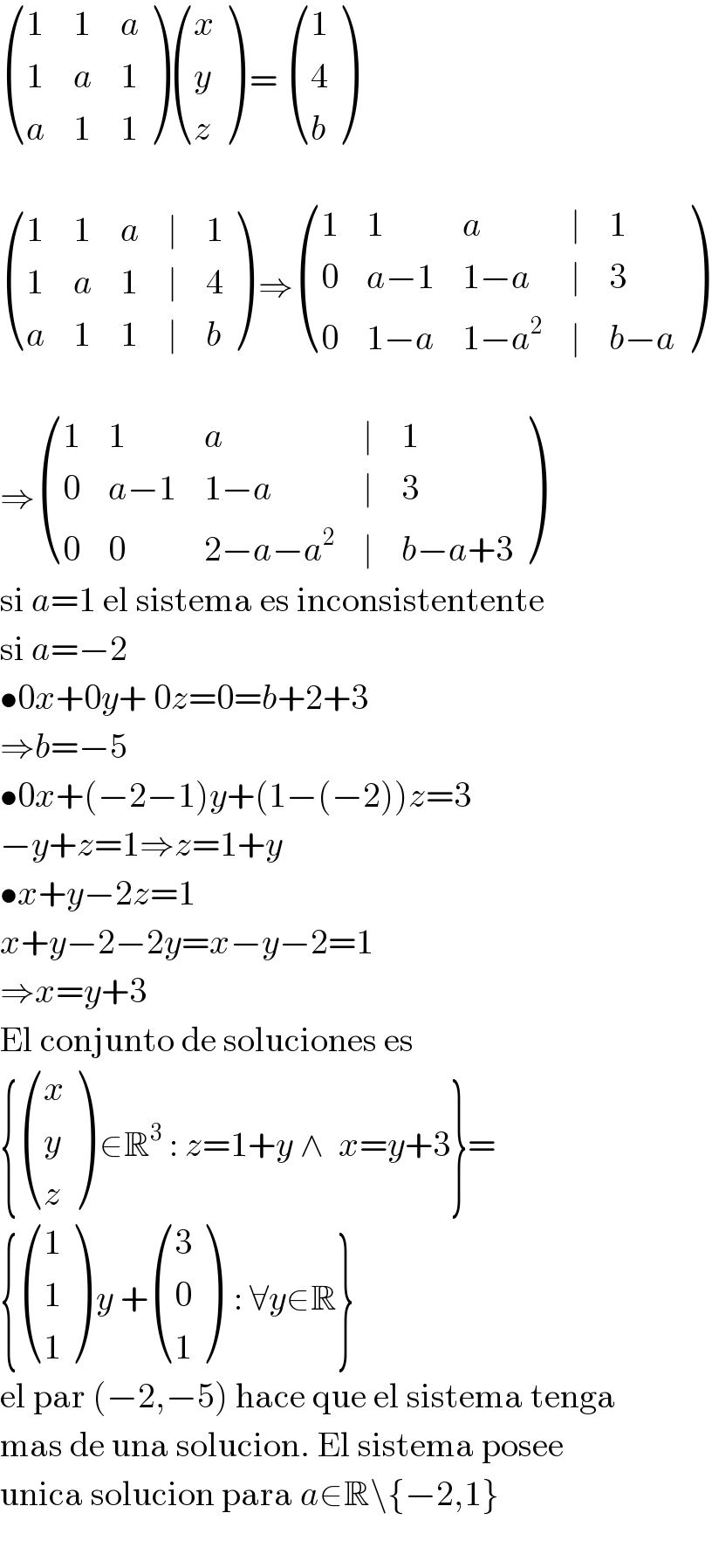
Question and Answers Forum
Previous in Matrices and Determinants Next in Matrices and Determinants
Question Number 87831 by aseer imad last updated on 06/Apr/20

Commented by aseer imad last updated on 06/Apr/20
please solve the problem by row echilon form or reduced row echilon form. TIA
Answered by arcana last updated on 06/Apr/20

